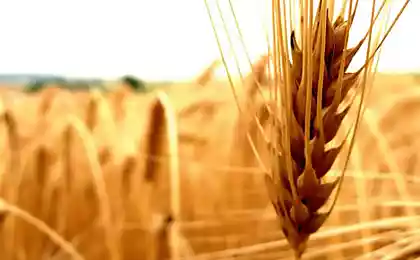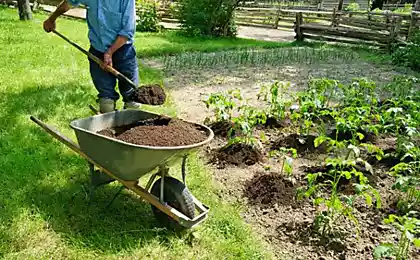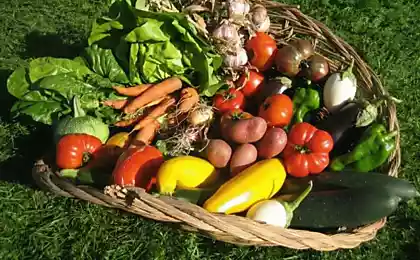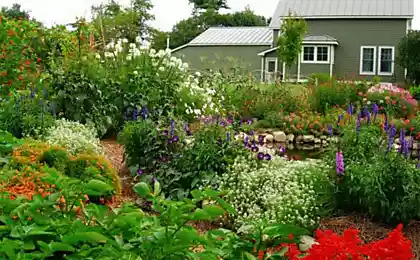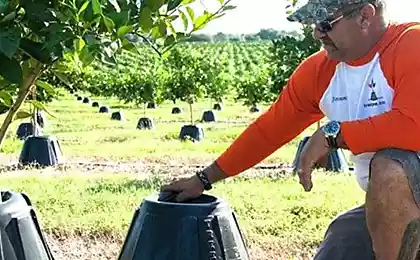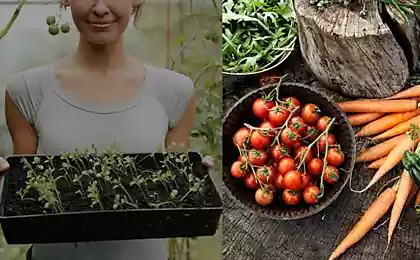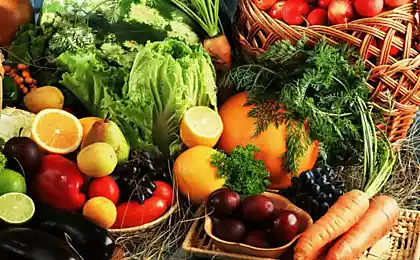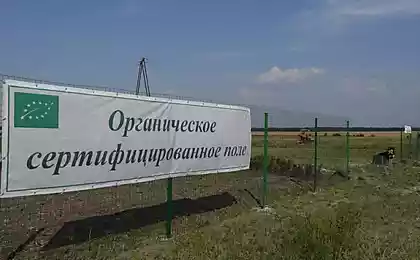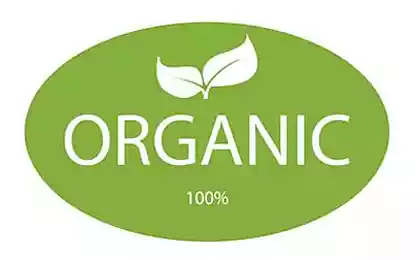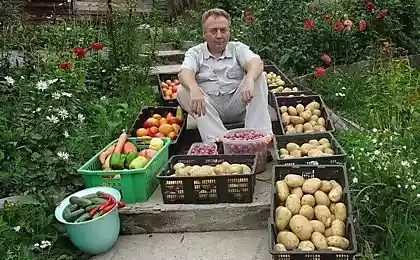302
Traditional and non-standard farming methods
Traditionally, the work of the farmer was to plow (or dig up) the land, fertilize it and sow seeds. Then weed and loosen, and in autumn - to harvest. And it would seem that here you can still come up with – so old it happened, so our ancestors did. But modern man is inquisitive and inclined to search for new ways, and therefore there are many alternative methods of agriculture.
Their supporters sometimes argue hoarsely, defending the advantages of their approach - and we will not argue. Everyone is free to choose what is close to him, what seems more correct, effective, reasonable - right? Sometimes we know too little about alternatives, so our choices are limited. Fortunately, this can be remedied: I hope that today’s review will be part of a larger discussion; I hope to hear the opinions of those who have experienced these or those techniques and obtained results. What rules and principles do you follow and why? In the meantime, let’s see what the options are...
It is also called natural - followers of this method many approaches to soil cultivation "spy" in nature itself. There is even such a term - "natural agriculture", that is, the cultivation of the soil in accordance with natural, natural principles.
Today, this method is very popular and certainly deserves a separate discussion. But our review will have to confine itself to a brief summary of its main substance. So...
Basic principles of organic (natural) agriculture 1. No digging.The use of this technique allows only shallow (up to 5-7 cm) loosening of the soil. A shovel is not needed - it is replaced by a flat cutter.
2. Do not use mineral fertilizers.Used exclusively organic in its various types and forms: compost and other organic fertilizers; sowing ciderates; construction of warm ridges and so on.
3. The use of toxic chemicals should be excluded.The priority is the prevention of plant diseases and the appearance of pests. If the problem could not be prevented, only biologics and folk methods are used.
4. Take worms and useful microorganisms as assistants.EM drugs activate the activity of soil microorganisms. These, in turn, accelerate the decomposition of organic matter, helping to increase soil fertility. Worms, processing organic waste, produce biohumus - a useful and environmentally friendly fertilizer.
Our ancestors did not think about the environmental purity of products on their table - for us this problem has become urgent. One of the goals of organic (natural) agriculture isget natural vegetables and fruitsThey are free of all kinds of “chemistry.”
Second goal:Increase soil fertility.In principle, proponents of traditional methods of fertilizer application pursue the same goal. But the ideology of organic agriculture is not to remake nature, but to help it, so the fertility of the soil is restored by agrotechnical techniques and natural means: organic mulch, ciderates, biologics and so on.
The third goal, which is important to many, is toease. It is no secret that the use of traditional methods of soil cultivation is associated with quite heavy physical work. Not everyone can do this – and the technologies of organic farming can really reduce the cost of effort and time in the beds.
About how it looks in practice, let’s look at the plot of the program Good advice:
And if you want to delve deeper into the essence of the method, listen to what Boris Andreevich Bublik says about agriculture in accordance with nature (lecture in Ufa)
American, Doctor of Agricultural Sciences Jacob Mittlider developed a system of crop production, known to many as the “narrow ridges of Mittlider”. These technologies, like organic farming, are difficult to describe in a nutshell. I myself in the 90s of the last century a little experimented with the Mittleider method – I was very interested in the overseas method. But let’s leave the details for a separate conversation and see what the idea is based on.
Basic Principles and Rules of Farming by Mittleider 1. Landing in narrow ridges. These can be specially arranged long ridges with sides of the soil or narrow ridges-boxes. Plants are planted on them more densely than we are used to, but due to the wide passages between the ridges, their optimal lighting is ensured.
2. The principle of balanced nutrition.Unlike organic farming, mineral fertilizers are actively used in this method. Balanced mixtures are prepared according to special recipes. Sometimes even the soil on the ridges is replaced by a neutral substrate, in which the necessary nutrients are introduced.
Special technologies are provided for the processing of seeds, and for growing seedlings. The method is used both in open ground and in greenhouses.
What is the purpose and meaning of the method Jacob Mittlider himself with agricultural labor is not familiar firsthand, and therefore his goal was toease upMake harvesting less time-consuming and burdensome.
Second challenge:yield. This goal is served by the principle of balanced nutrition, which allows a limited area with a dense planting of crops to achieve their rapid growth, early and abundant fruiting.
About how the application of this method may look in practice, will tell the following video
These methods, as you can see, are in many ways diametrically opposed to each other. Each of them has its supporters and opponents. And many summer residents still adhere to the principles of traditional agriculture: plow and sow, as did fathers, grandfathers and great-grandfathers. Who's right? Which method is better? I don’t think there is an answer to these questions... What do you think?
Experimentation and innovation, of course, cannot be left out either. As they say, “in our age of technological progress” modern technologies penetrate into such a patriarchal and traditional, seemingly, sphere as agriculture. To conclude our review, let’s look at some examples of experimental methods for growing vegetables and fruits. Yes, until we can use them in our country – but who knows...
For decades, scientists, designers, plant growers around the world create all kinds of systems of vertical gardens, living green walls. And according to scientists, over time and familiar to us endless fields will be able to move to skyscrapers. Here, plants will be created optimal conditions for life and development all year round, regardless of climate and weather. It is assumed that plants, in turn, will respond to such care with a high-quality harvest.
In Israel, one of the main problems of agriculture is the climate: lack of water and heat significantly complicate agriculture. But these difficulties proved a great incentive for the development of new agricultural technologies.
And the concept of precision farming is already yielding tangible results in experimental agricultural enterprises in Russia. With the help of modern equipment and software, it becomes possible to take into account even such factors as heterogeneity of soil composition in different areas of the field or changes in terrain.
Source: www.7dach.ru
Their supporters sometimes argue hoarsely, defending the advantages of their approach - and we will not argue. Everyone is free to choose what is close to him, what seems more correct, effective, reasonable - right? Sometimes we know too little about alternatives, so our choices are limited. Fortunately, this can be remedied: I hope that today’s review will be part of a larger discussion; I hope to hear the opinions of those who have experienced these or those techniques and obtained results. What rules and principles do you follow and why? In the meantime, let’s see what the options are...
It is also called natural - followers of this method many approaches to soil cultivation "spy" in nature itself. There is even such a term - "natural agriculture", that is, the cultivation of the soil in accordance with natural, natural principles.
Today, this method is very popular and certainly deserves a separate discussion. But our review will have to confine itself to a brief summary of its main substance. So...
Basic principles of organic (natural) agriculture 1. No digging.The use of this technique allows only shallow (up to 5-7 cm) loosening of the soil. A shovel is not needed - it is replaced by a flat cutter.
2. Do not use mineral fertilizers.Used exclusively organic in its various types and forms: compost and other organic fertilizers; sowing ciderates; construction of warm ridges and so on.
3. The use of toxic chemicals should be excluded.The priority is the prevention of plant diseases and the appearance of pests. If the problem could not be prevented, only biologics and folk methods are used.
4. Take worms and useful microorganisms as assistants.EM drugs activate the activity of soil microorganisms. These, in turn, accelerate the decomposition of organic matter, helping to increase soil fertility. Worms, processing organic waste, produce biohumus - a useful and environmentally friendly fertilizer.
Our ancestors did not think about the environmental purity of products on their table - for us this problem has become urgent. One of the goals of organic (natural) agriculture isget natural vegetables and fruitsThey are free of all kinds of “chemistry.”
Second goal:Increase soil fertility.In principle, proponents of traditional methods of fertilizer application pursue the same goal. But the ideology of organic agriculture is not to remake nature, but to help it, so the fertility of the soil is restored by agrotechnical techniques and natural means: organic mulch, ciderates, biologics and so on.
The third goal, which is important to many, is toease. It is no secret that the use of traditional methods of soil cultivation is associated with quite heavy physical work. Not everyone can do this – and the technologies of organic farming can really reduce the cost of effort and time in the beds.
About how it looks in practice, let’s look at the plot of the program Good advice:
And if you want to delve deeper into the essence of the method, listen to what Boris Andreevich Bublik says about agriculture in accordance with nature (lecture in Ufa)
American, Doctor of Agricultural Sciences Jacob Mittlider developed a system of crop production, known to many as the “narrow ridges of Mittlider”. These technologies, like organic farming, are difficult to describe in a nutshell. I myself in the 90s of the last century a little experimented with the Mittleider method – I was very interested in the overseas method. But let’s leave the details for a separate conversation and see what the idea is based on.
Basic Principles and Rules of Farming by Mittleider 1. Landing in narrow ridges. These can be specially arranged long ridges with sides of the soil or narrow ridges-boxes. Plants are planted on them more densely than we are used to, but due to the wide passages between the ridges, their optimal lighting is ensured.
2. The principle of balanced nutrition.Unlike organic farming, mineral fertilizers are actively used in this method. Balanced mixtures are prepared according to special recipes. Sometimes even the soil on the ridges is replaced by a neutral substrate, in which the necessary nutrients are introduced.
Special technologies are provided for the processing of seeds, and for growing seedlings. The method is used both in open ground and in greenhouses.
What is the purpose and meaning of the method Jacob Mittlider himself with agricultural labor is not familiar firsthand, and therefore his goal was toease upMake harvesting less time-consuming and burdensome.
Second challenge:yield. This goal is served by the principle of balanced nutrition, which allows a limited area with a dense planting of crops to achieve their rapid growth, early and abundant fruiting.
About how the application of this method may look in practice, will tell the following video
These methods, as you can see, are in many ways diametrically opposed to each other. Each of them has its supporters and opponents. And many summer residents still adhere to the principles of traditional agriculture: plow and sow, as did fathers, grandfathers and great-grandfathers. Who's right? Which method is better? I don’t think there is an answer to these questions... What do you think?
Experimentation and innovation, of course, cannot be left out either. As they say, “in our age of technological progress” modern technologies penetrate into such a patriarchal and traditional, seemingly, sphere as agriculture. To conclude our review, let’s look at some examples of experimental methods for growing vegetables and fruits. Yes, until we can use them in our country – but who knows...
For decades, scientists, designers, plant growers around the world create all kinds of systems of vertical gardens, living green walls. And according to scientists, over time and familiar to us endless fields will be able to move to skyscrapers. Here, plants will be created optimal conditions for life and development all year round, regardless of climate and weather. It is assumed that plants, in turn, will respond to such care with a high-quality harvest.
In Israel, one of the main problems of agriculture is the climate: lack of water and heat significantly complicate agriculture. But these difficulties proved a great incentive for the development of new agricultural technologies.
And the concept of precision farming is already yielding tangible results in experimental agricultural enterprises in Russia. With the help of modern equipment and software, it becomes possible to take into account even such factors as heterogeneity of soil composition in different areas of the field or changes in terrain.
Source: www.7dach.ru
Extinct animal species due to human fault
6 myths about proper behavior in the event of a natural disaster
